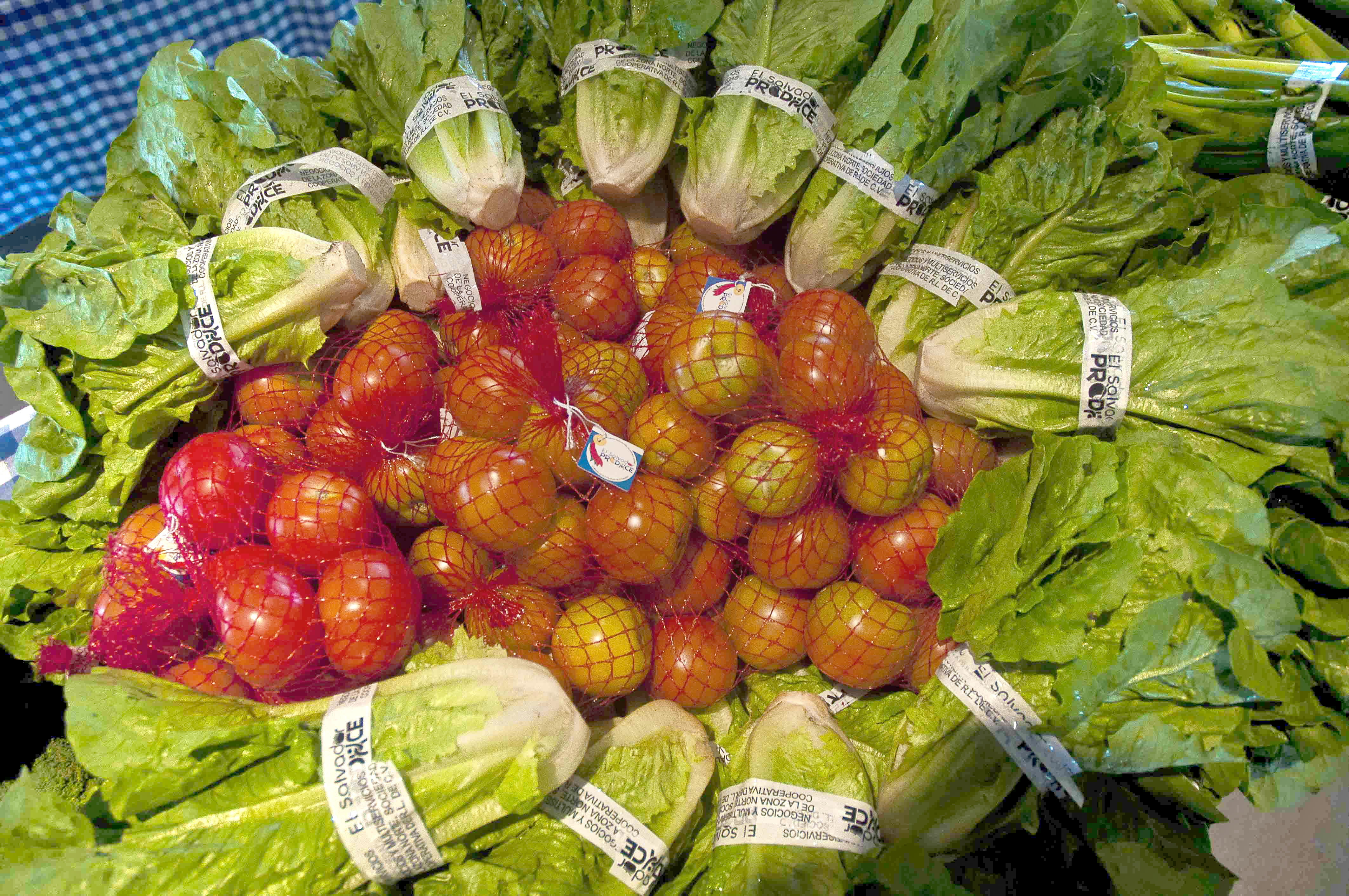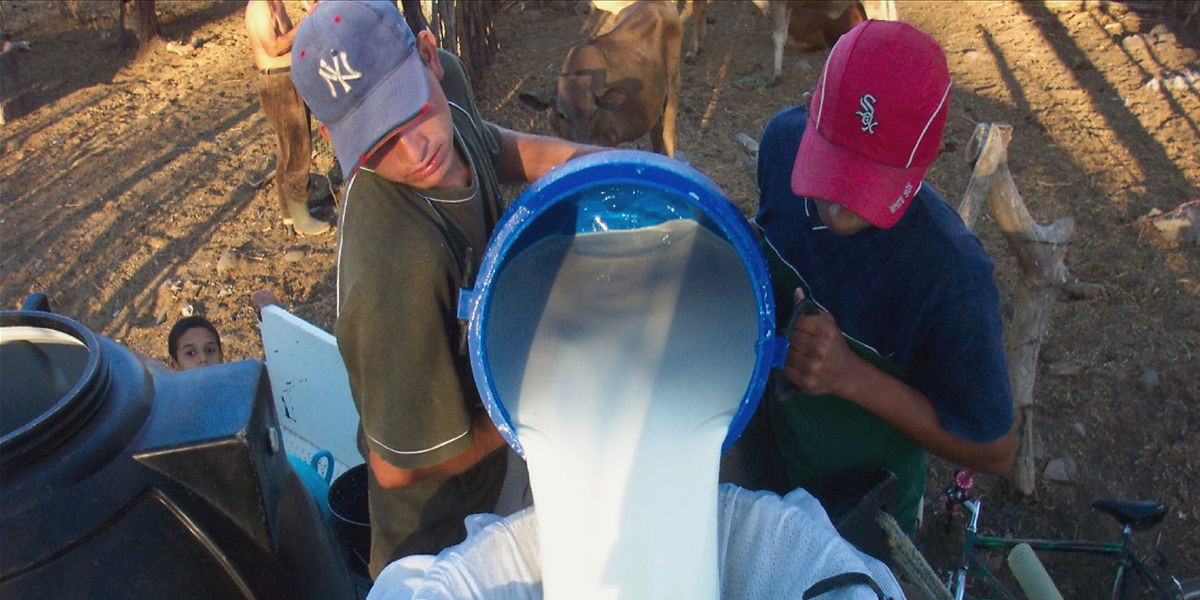Program Overview
MCC’s $449.6 million El Salvador Compact (2007-2012) funded the $67 million Productive Development Project which included the $55 million Production and Businesses Services (PBS) Activity. The activity, which was implemented in two phases, along with the Investment Support and Financial Services Activities, aimed to increase production and employment in the Northern Zone. The activity was based on the theory that technical and material assistance to farmers and small-scale producers would help them transition to higher-profit activities, thereby generating investment, expanding markets, and creating new jobs.
Key Findings
Interim Impact on Producer Outcomes
- For all three value chains targeted by this project (handicrafts, dairy, and horticulture), Production and Business Services (PBS) assistance had no effect on producers’ technology adoption or product diversification after one year.
- PBS assistance increased employment in the handicrafts chain; however private investment did not change in any of the value chains.
- After one year of PBS assistance, producers’ income increased in the dairy chain only.
Final Implementation and Results
- The flexibility of implementation staff to modify the assistance model based on learning from the implementation of Phase I was a key factor of success for the activity.
- Implementation was constrained by large participant targets, insufficient assistance related to market access (primarily in Phase I), non-strategic use of donations, disrupted assistance between phases, and the short timeframe for Phase II.
- Administrative data indicate that outcome targets were met.
Sustainability of Enterprise Development
- PBS assistance for enterprise development appeared to generate positive results in the existing handicrafts enterprises and mixed results in the dairy and newly established horticulture enterprises.
Evaluation Questions
These interim impact and final performance evaluations were designed to answer the following questions:
- 1
What impact did the PBS assistance in Phase I have on adoption, employment creation, and producers’ investment and income? - 2
How was the activity (Phase I and II) implemented and did it produce its desired results? - 3
What was learned about supporting enterprise development and how sustainable are those enterprises?
Detailed Findings
Findings from the final impact evaluation of the handicrafts value chain support can be found under the Production and Business Services Activity evaluation brief.
Interim Impact on Producer Outcomes

The dairy sector received training in herd maintenance, irrigation techniques, vaccines, deworming, fertilizers, and fumigation.
The PBS Activity offered technical assistance and in-kind donations to farmers and artisans in El Salvador’s Northern Zone to help them transition to higher-profit activities, create new jobs, and generate increased income. During Phase I (2009-2010), assistance was oriented toward decreasing input costs, promoting new technologies, and enhancing production, which represented a departure from the project’s original market-based design.
From May to August 2010, the dairy sector received training in herd maintenance, irrigation techniques, vaccines, deworming, fertilizers, and fumigation. Phase I donations included hay shredders, seeds, and genetic material. The evaluation found that farmers were 5 percentage points more likely to conduct quality control, 23 percentage points more likely to take measures to reduce costs, and 7 percentage points more likely to report looking for new clients. The effect on income was substantial. The evaluation found a $3,114 increase in net annual productive income for dairy producers who participated in the activity, roughly double the income of those who did not participate.
From April to September 2010, the horticulture sector received technical assistance with new technologies and high value crops as well as donations of irrigation systems, machinery, greenhouses, and plants. As a result of assistance, farmers were 11 percentage points more likely to cultivate fruits or vegetables. Farmers who participated were 8 percentage points more likely to sell fruits and vegetables, but did not have higher annual productive income linked to these sales.
From September 2009 to August 2010, the handicrafts sector received only a few donations but received training in design, marketing, quality control and accounting, and introduced design molds to reduce costs and standardize quality. The evaluation found a 0.19 increase in annual full-time equivalent jobs for program participants, which is equivalent to over two months of additional full-time labor, but found no impact on net annual productive income.
Final Implementation and Results

Vegetables for sale by an assisted enterprise.
Nearly all interviewed stakeholders noted that PBS implementation was hindered by the lack of focus on market access and business development in all three value chains during Phase I. Phase II was redesigned in response to those concerns. Under the new scheme, assistance was comprehensive in that farmers would receive production assistance from technical service providers, as well as assistance with market access and sales from commercial service providers (producer-owned enterprises). A variety of stakeholders expressed support for this assistance model.
Under Phase II implementation, each farmer enterprise established a revolving fund that provided small producers with subsidized inputs and allowed them to finance these inputs through a payment plan (at no interest). Participants used this fund to obtain inputs like seeds and fertilizer. The evaluation found that stakeholders praised the fund and recommended it be implemented in future agricultural interventions.
The high participant-to-staff ratio in Phase I diluted overall service delivery. Adding junior staff in Phase II improved the situation somewhat, though stakeholders agreed that the junior staff often lacked the experience needed to properly supervise participants’ adoption of new technologies.
Few PBS assistance activities occurred during the transition from Phase I to Phase II in the dairy and horticulture chains. Participants in the horticulture chain mentioned that the gap in assistance had a detrimental effect on production, as many farmers did not receive follow-up assistance for new crops they planted in the rainy season.
Administrative data indicate that assistance surpassed targets for increased production, employment, and sales. However, administrative data do not consider what would have happened without the project, and the interim impact findings are not generalizable over the entire implementation period, so it is not possible to make a definitive conclusion regarding the impact of the activity from 2008 to 2012.
Perishable Cargo Centre and Loan Program
Despite start-up delays due to additional upgrades required by the private operator, the Perishable Cargo Centre is now operating effectively. The cargo center has improved the quality of fresh horticulture exports that pass through the facility, though its impact has been limited because produce volumes have been lower than anticipated. The limited volumes are in part due to the initial assumption that the center would be the sole provider of perishable cargo handling services at Kotoka International Airport, which did not happen. Instead, the Perishable Cargo Centre started as a new business in a highly competitive environment for air cargo handling and struggles to earn a profit quickly, although this improved later.
The loan program aimed to revitalize the declining exports of Ghanaian pineapples by facilitating the purchase and installation of packing lines, providing pre-cooling and cold storage facilities, and installing standby electric generators at existing pack houses that belong to pineapple exporters. It was expected that with these facilities and the equipment borrowers would be able to export fresh pineapples with adequate shelf life to meet European market requirements. Unfortunately, these expectations were not fully achieved due to the failure of some borrowers to repay their loans and limited year-on-year production volumes.
Sustainability of Enterprise Development
PBS assistance was not sufficient to place the newly established horticulture enterprise on a path to financial self-sustainability. In particular, competitive market conditions, weak incentives facing stakeholders, and a lack of ownership and capacity among enterprise members contributed to this negative outcome.
In contrast, assistance to existing producer-owned enterprises in the handicraft chain was generally successful. Because these handicraft enterprises had been operating for several years prior to PBS assistance, they had already proven the viability of their business model.
MCC Learning
Use the program logic to ensure that the evaluation has sufficient statistical power to track realistic impacts.
Test assumptions around the appropriate content and duration of training to maximize impact.
Reporting on detailed costs from implementers should be required by their contracts and potentially required from accountable entities as well.
The randomized roll-out evaluation approach is risky, as there needs to be enough time between the early group and later group to see behavior change and accrual of benefits.
The envisioned overlap of beneficiaries between the three activities in the Productive Development Project was not realized. Linkages between activities will not happen on their own.
Evaluation Methods

The interim impact evaluation used a randomized roll-out methodology with an exposure period of approximately one year. The final performance evaluation used an ex-post methodology with an exposure period of 6 months to 3 years.
The impact evaluation randomized groups from the handicrafts, dairy, and horticulture value chains into the first implementation phase and the second implementation phase, with those assigned to the first phase (38 groups) serving as the treatment group and those assigned to the second phase (40 groups) serving as the control group until Phase II of the activity started. The evaluation sample of 1,736 individuals from both treatment and control included 518 from dairy, 593 from horticulture, and 625 from handicrafts. The baseline survey was conducted in September 2009 with the follow-up survey in July 2011.
Due to changes in project design in the middle of implementation and low participation of the horticulture treatment group in the activity, MCC cancelled the final data collection rounds for the impact evaluation and decided to conduct a final performance evaluation.
The performance evaluation used a mixed-methods approach in which the evaluator collected and analyzed qualitative and quantitative data from administrative records, programmatic reports, and stakeholder interviews. Interviews were conducted in July 2012 with MCC, implementers, the Ministry of Agriculture, activity participants, and representatives from the supported enterprises.
2021-002-2655


